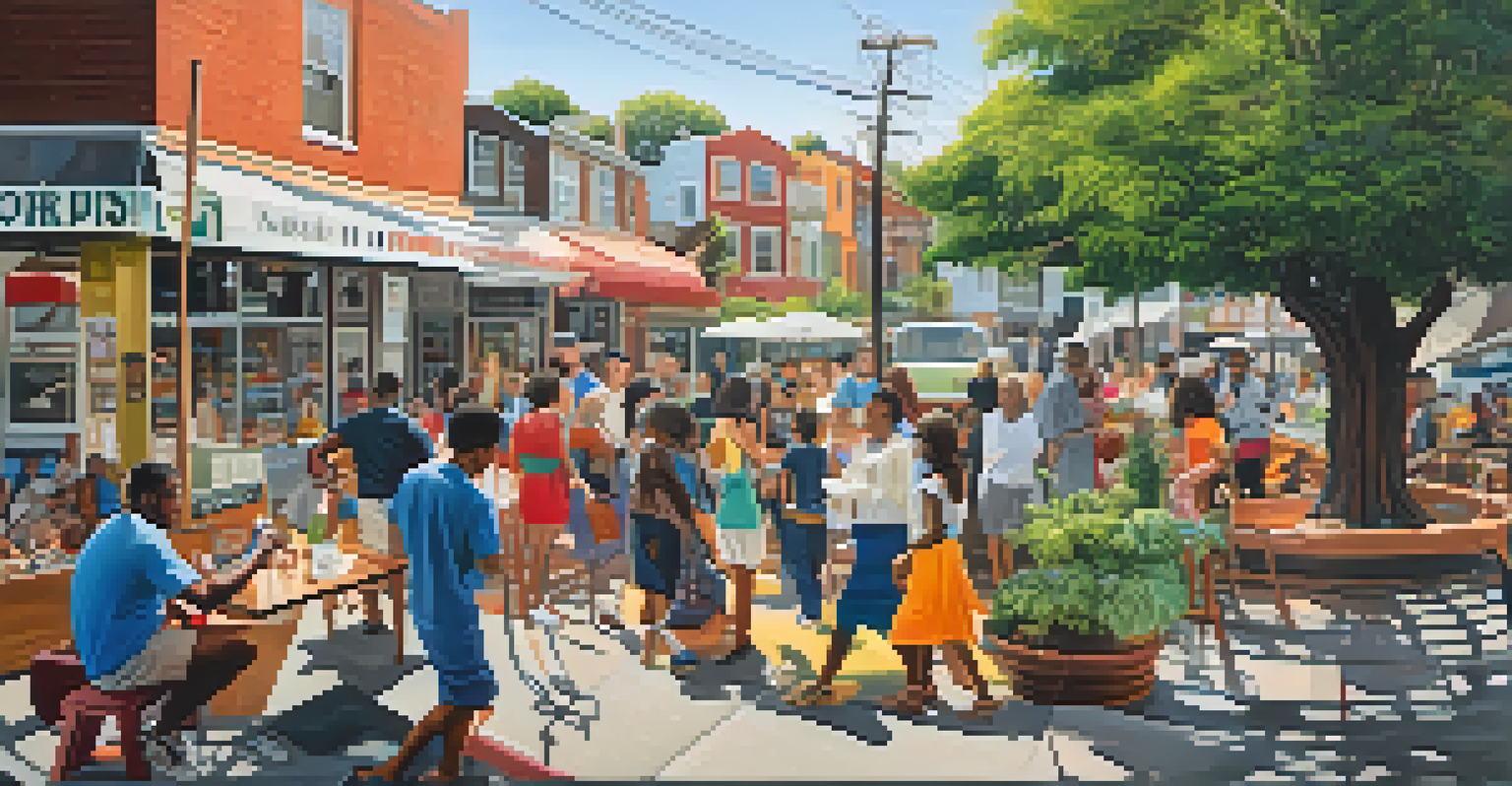Exploring Non-Fiction: Creative Approaches to Reality

Understanding Non-Fiction: More Than Just Facts
Non-fiction often evokes thoughts of dry textbooks or encyclopedias, but it encompasses a wide range of storytelling. At its core, non-fiction is about conveying truths—real events, people, and ideas—through various creative lenses. This genre allows for an artistic approach, blending facts with narrative techniques that can engage readers just as much as fiction does.
Non-fiction is a genre that allows for an artistic approach, blending facts with narrative techniques that can engage readers just as much as fiction does.
Think of non-fiction as a canvas where writers paint real-life experiences, using narrative arcs, character development, and vivid imagery. This creative license can transform mundane facts into compelling stories. For instance, a biography might capture not just events but the emotional journey of the subject, making it resonate with readers on a personal level.
Ultimately, understanding non-fiction requires an appreciation for its potential to inform and inspire. By breaking away from the notion that facts must be presented plainly, writers can invite readers into a world where reality is as captivating as any fictional tale.
The Art of Storytelling in Non-Fiction
Storytelling isn't exclusive to fiction; in non-fiction, it’s an essential tool that helps weave facts into engaging narratives. By structuring a non-fiction piece like a story—with a clear beginning, middle, and end—writers can draw readers in and maintain their interest. This involves crafting a narrative arc that highlights conflict and resolution, even when dealing with real events.

Consider the approach taken by documentary filmmakers who blend interviews with visual storytelling. They use real footage and personal accounts to create an emotional connection, illustrating how non-fiction can be just as moving as a scripted drama. For example, a documentary on climate change might not only present statistics but also share personal stories from those affected, creating a powerful narrative impact.
Non-Fiction Blends Facts and Art
Non-fiction uses creative storytelling techniques to make real events and ideas engaging and relatable.
By embracing the elements of storytelling, non-fiction writers can elevate their work, making complex topics more relatable and engaging. This approach not only informs readers but also invites them to reflect on their own experiences in relation to the subject matter.
Creative Formats for Non-Fiction Writing
Non-fiction can take many forms, from essays and memoirs to podcasts and graphic novels, each with its unique appeal. For instance, a memoir can delve into personal experiences while weaving in broader societal themes, making it both intimate and relatable. This versatility allows writers to experiment with different formats to find the best way to convey their message.
Research is the backbone of non-fiction, providing the factual foundation that supports the narrative.
Another emerging format is the narrative podcast, where real-life stories are told through interviews and sound design. This medium engages listeners in a way that traditional writing may not, creating an immersive experience. An example of this is the podcast 'Serial,' which captivated audiences with its investigative storytelling format, blending facts with narrative tension.
Exploring these creative formats can breathe new life into non-fiction writing. By stepping outside conventional boundaries, writers can connect with diverse audiences and present reality in innovative ways that resonate deeply.
Using Personal Experience to Enhance Non-Fiction
Incorporating personal experiences into non-fiction can transform a factual account into a relatable story. When writers share their own journeys, struggles, and triumphs, they create a bond with readers, making the information more impactful. This method humanizes the topic, allowing readers to see the real-world implications of the facts presented.
For example, a writer discussing mental health may share their own experiences to illustrate broader societal issues. By doing so, they can demystify complex topics and foster empathy among readers. This personal touch not only enriches the narrative but also encourages conversations around sensitive subjects.
Personal Stories Enhance Impact
Incorporating personal experiences in non-fiction creates a stronger connection with readers and deepens the narrative.
Ultimately, personal experiences serve as powerful tools in non-fiction. They invite readers into the writer's world, offering insights that go beyond statistics and data, making the content more engaging and memorable.
The Role of Research in Non-Fiction Writing
Research is the backbone of non-fiction, providing the factual foundation that supports the narrative. A well-researched piece not only enhances credibility but also enriches the story with depth and context. Writers must balance thorough research with creativity to maintain reader engagement while conveying accurate information.
Consider the work of investigative journalists who delve deep into their subjects, uncovering truths that may be hidden from the public eye. Their findings often lead to compelling narratives that inform and stir public discourse. For instance, a thorough investigation into a social issue can reveal systemic problems and spark meaningful conversations.
By embracing rigorous research methods, non-fiction writers can ensure their work is both informative and entertaining. This commitment to accuracy, combined with a creative approach, allows them to captivate audiences while shedding light on important topics.
Visual Elements: Enhancing Non-Fiction with Imagery
Incorporating visual elements into non-fiction can significantly enhance the reader's experience. Images, infographics, and videos not only break up text but also provide additional layers of understanding. For example, a non-fiction book about wildlife conservation might include stunning photographs that evoke emotion and highlight the beauty of the subject.
Visual storytelling is particularly effective in digital formats, where multimedia can engage audiences in unique ways. A blog post covering a historical event may include maps, timelines, and photographs to illustrate the narrative, making it more immersive. This approach helps readers visualize complex information, making it easier to digest.
Research is Essential for Credibility
Thorough research provides the factual backbone of non-fiction, enriching stories and enhancing their credibility.
By blending text with visuals, non-fiction writers can create a richer, more engaging experience. This synergy of words and imagery captivates readers and enhances their understanding of the content, demonstrating that reality can be as vibrant as imagination.
The Future of Non-Fiction: Trends and Innovations
As the landscape of media continues to evolve, so too does the world of non-fiction. New technologies and platforms are reshaping how stories are told, opening up exciting opportunities for writers. From virtual reality experiences to interactive web articles, the future of non-fiction looks promising and innovative.
For instance, immersive journalism allows readers to experience events through virtual reality, creating a sense of presence that traditional formats can't achieve. This trend not only captivates audiences but also fosters a deeper understanding of complex issues. As technology advances, non-fiction writing is bound to evolve, integrating new tools to tell stories in compelling ways.

Ultimately, the future of non-fiction is bright, with endless possibilities for creativity and exploration. As writers embrace these innovations, they will continue to find fresh and exciting ways to share the truths of our world, keeping readers engaged and informed.